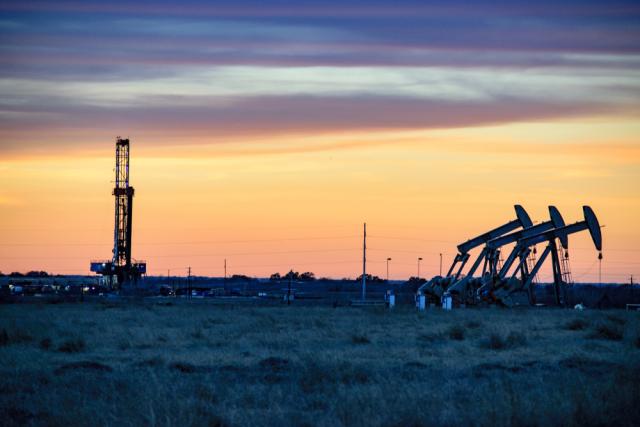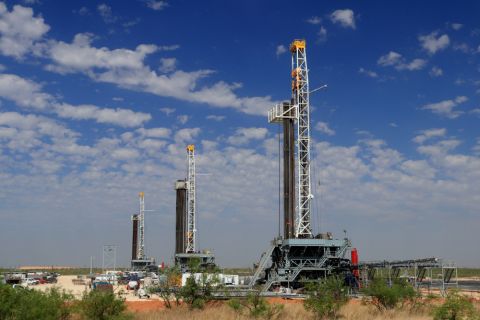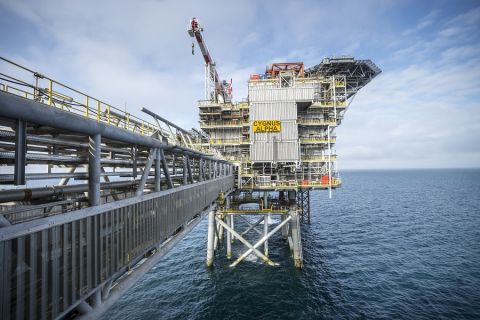
The U.S. Energy Information Administration forecasts oil and gas production will increase in April. (Source: Ferrez Frames/Shutterstock.com)
The Permian Basin is again set to lead oil production growth in the U.S., with Appalachia in the gas production driver’s seat in April, according to the latest drilling productivity report released by the U.S. Energy Information Administration.
The report, released March 18, estimates changes in production from existing oil and gas wells in seven key regions across the U.S., including the nation’s largest shale plays.
Production from the biggest oil-producing region, the Permian, is expected to rise by 40,000 barrels per day (bbl/d) to about 4.18 million barrels per day (MMbbl/d), compared to March. That equates to roughly half of the total 8.59 MMbbl/d the EIA estimates will be produced from all seven regions combined.
This comes as some of the biggest companies operating in the region, including Exxon Mobil Corp. and Chevron, push forward with plans to significantly boost production in the Permian.
“The biggest source of new production is expected to come from the Permian,” Jay Johnson, executive vice president, upstream, for Chevron, told analysts earlier this month.
Chevron aims to grow its Permian shale production to 900,000 bbl/d by year-end 2023. The company’s production in the Permian jumped 84% to about 377,000 bbl/d by year-end 2018, compared to a year earlier.
Exxon Mobil Corp. also announced earlier this month revisions to its Permian Basin growth plans, aiming to ramp up production by nearly 80% to more than 1 million barrels of oil equivalent per day by 2024.
If successful, the production growth would solidify Chevron’s and Exxon Mobil’s positions as dominate players in the basin.
Besides the Permian, double-digit oil production growth is also expected from the Niobrara and Bakken regions. The EIA estimates Niobrara’s oil production will grow by 21,000 bbl/d to 753,000 bbl/d, while the Bakken could see a 17,000-bbl/d increase, pushing its oil production up to about 1.46 MMbbl/d.
In all, the EIA believes oil production from the seven regions will increase by 85,000 bbl/d in April.
Gas production is forecast to rise by 883 million cubic feet per day (MMcf/d) to just more than 79 billion cubic feet per day (Bcf/d) in April, compared to March, according to the EIA’s report.
Topping the list of biggest gas-producing regions expected is Appalachia, where production is forecast to rise by 353 MMcf/d to about 31.5 Bcf/d, in April.
Other regions expected to experience notable gas production growth include the Permian, up 216 MMcf/d to about 14.1 Bcf/d and Haynesville, where production is forecast to jump by 182 MMcf/d to about 10.5 Bcf/d, according to the EIA.
Just about all regions could see oil and gas production growth in April. But there are a few exceptions. In the Anadarko region, oil production is expected to fall by 5,000 bbl/d with gas production slipping by 1 MMcf/d in April, compared to March. Oil production in the Haynesville is forecast to remain unchanged.
Velda Addison can be reached at vaddison@hartenergy.com.
Recommended Reading
Excelerate Energy, Qatar Sign 15-year LNG Agreement
2024-01-29 - Excelerate agreed to purchase up to 1 million tonnes per anumm of LNG in Bangladesh from QatarEnergy.
UK’s Union Jack Oil to Expand into the Permian
2024-01-29 - In addition to its three mineral royalty acquisitions in the Permian, Union Jack Oil is also looking to expand into Oklahoma via joint ventures with Reach Oil & Gas Inc.
Eni, Vår Energi Wrap Up Acquisition of Neptune Energy Assets
2024-01-31 - Neptune retains its German operations, Vår takes over the Norwegian portfolio and Eni scoops up the rest of the assets under the $4.9 billion deal.
NOG Closes Utica Shale, Delaware Basin Acquisitions
2024-02-05 - Northern Oil and Gas’ Utica deal marks the entry of the non-op E&P in the shale play while it’s Delaware Basin acquisition extends its footprint in the Permian.
California Resources Corp., Aera Energy to Combine in $2.1B Merger
2024-02-07 - The announced combination between California Resources and Aera Energy comes one year after Exxon and Shell closed the sale of Aera to a German asset manager for $4 billion.






